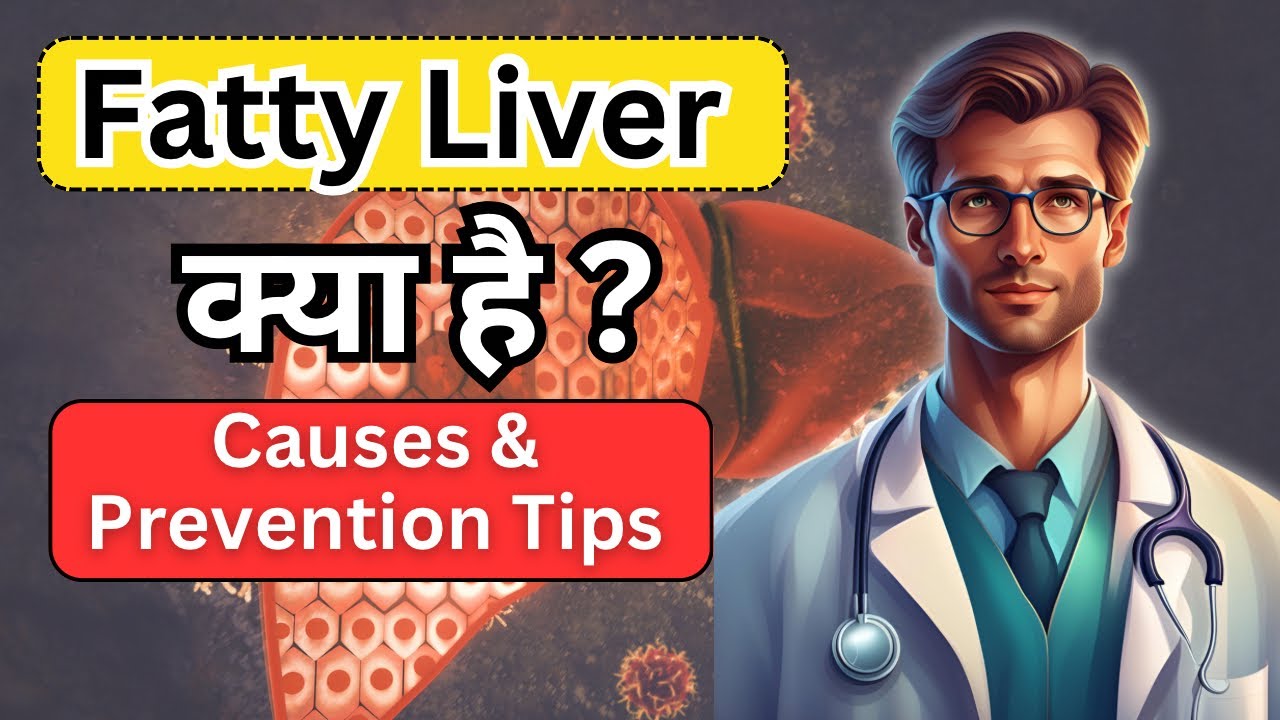Understanding Fatty Liver Disease
Understanding Fatty Liver Disease , Fatty liver disease, once considered a relatively benign condition, has emerged as a significant health concern affecting millions worldwide.
This comprehensive article delves into the intricacies of fatty liver disease, exploring its causes, symptoms, diagnosis, treatment options, and prevention strategies.
What is Fatty Liver Disease?
Fatty liver, occurs when excess of fat accumulates in liver .
While it’s normal for the liver to contain some fat, if more than 5-10% of the liver’s weight is fat, it’s considered a fatty liver.
Two main types:
- Alcoholic Fatty Liver Disease (AFLD): Caused by too much alcohol consumption.
- Non-Alcoholic Fatty Liver Disease (NAFLD): Occurs in people who drink little to no alcohol.
NAFLD is further divided into two subtypes:
- Simple fatty liver (steatosis): Fat accumulates in the liver cells without causing significant inflammation or liver cell damage.
- Non-alcoholic steatohepatitis (NASH): Fat accumulation is accompanied by liver cell inflammation and damage, which can lead to fibrosis, cirrhosis, and liver failure.
The Silent Nature of Fatty Liver Disease
Fatty liver disease is often referred to as a “silent” condition because it typically doesn’t cause noticeable symptoms in its early stages.
This silent progression makes it particularly dangerous, as liver damage can occur without the individual being aware of it.
By the time symptoms appear, the disease may have already advanced to a more serious stage.
Risk Factors and Causes
Understanding the risk factors and causes of fatty liver disease is crucial for both prevention and early intervention.
Some key factors include:
- Obesity: Excess body fat, especially around the abdomen, is strongly linked to fatty liver disease.
- Insulin resistance and type 2 diabetes: These conditions affect how the body processes glucose and can lead to fat accumulation in the liver.
- High cholesterol and triglycerides: Elevated levels of these blood lipids are associated with fatty liver disease.
- Metabolic syndrome: A cluster of conditions including high blood pressure, high blood sugar, excess body fat around the waist, and abnormal cholesterol levels.
- Rapid weight loss: Paradoxically, losing weight too quickly can sometimes lead to fatty liver.
- Certain medications: Some drugs, such as corticosteroids and certain cancer treatments, can contribute to fatty liver.
- Genetic factors: Some genetic variations may increase susceptibility to fatty liver disease.
- Age and gender: The risk increases with age, and men are more likely to develop fatty liver than women.
Symptoms and Diagnosis
As mentioned earlier, fatty liver disease often doesn’t cause noticeable symptoms in its early stages.
However, as the condition progresses, some individuals may experience:
- Fatigue and weakness
- Abdomen pain or discomfort, especially in the upper right side
- Enlarged liver
- Enlarged spleen
- Red palms
- Yellowing of the skin and eyes (jaundice) in advanced cases
Diagnosing fatty liver disease typically involves a combination of methods:
- Medical history and physical examination: The doctor will ask about symptoms, medical history, alcohol consumption, and perform a physical exam.
- Blood tests: Liver function tests can reveal elevated liver enzymes, which may indicate liver damage.
- Imaging tests: Ultrasound, CT scans, or MRI can visualize fat in the liver and assess its size and shape.
- Liver biopsy: In some cases, a small sample of liver tissue may be taken to determine the extent of liver damage and rule out other conditions.
- FibroScan: This non-invasive test uses ultrasound to measure liver stiffness, which can indicate the presence of fibrosis or cirrhosis.
The Progression of Fatty Liver Disease
Understanding the potential progression of fatty liver disease is crucial for both patients and healthcare providers.
The disease can follow several paths:
- Stable fatty liver: In many cases, especially with simple fatty liver (steatosis), the condition may not progress and can even improve with lifestyle changes.
- Progressive NASH: Some cases of NAFLD can progress to NASH, where inflammation and liver cell damage occur. This can lead to fibrosis (scarring) of the liver.
- Cirrhosis: In advanced cases, extensive scarring can result in cirrhosis, where the liver’s structure and function are severely compromised.
- Liver failure: In rare cases, fatty liver disease can progress to liver failure, necessitating a liver transplant.
- Hepatocellular carcinoma: There’s an increased risk of liver cancer in individuals with long-standing NASH and cirrhosis.
It’s important to note that not everyone with fatty liver disease will experience this progression.
Early intervention and lifestyle changes can often halt or even reverse the condition.
Treatment Approaches
The treatment of fatty liver disease focuses on addressing the underlying causes and preventing further liver damage.
Key approaches include:
- Lifestyle modifications:
- loose your weight through a balanced diet and regular exercise
- Limiting or avoiding alcohol consumption
- Managing diabetes and other metabolic conditions
Dietary changes:
- You have to Reduce the intake of saturated fats, refined carbohydrates, and sugary foods
- You have to Increase consumption of fruits, vegetables, whole grains, and lean proteins
- Considering a Mediterranean-style diet, which has shown benefits for liver health
Exercise:
- Regular physical activity helps reduce liver fat and improve insulin sensitivity
- Both aerobic exercises and resistance training can be beneficial
Medications:
- While there are no FDA-approve medications specifically for fatty liver disease, certain drugs may be prescribed to address related conditions:
- Vitamin E for non-diabetic NASH patients
- Pioglitazone for diabetic NASH patients
- Statins for high cholesterol
- Medications will use to control blood sugar in diabetic patients
Liver transplant:
- In severe cases where the liver has been extensively damage, a liver transplant may be necessary.
Emerging Treatments and Research
The field of fatty liver disease treatment is rapidly evolving, with several promising avenues under investigation:
- PPAR agonists: These drugs target specific cellular receptors involved in metabolism and inflammation.
- FXR agonists: These compounds affect bile acid metabolism and may improve liver function.
- Incretins: Hormones that regulate glucose metabolism and may have beneficial effects on liver fat.
- Antifibrotic agents: Drugs that aim to reduce or reverse liver scarring.
- Antioxidants and anti-inflammatory agents: Compounds that may help reduce liver cell damage and inflammation.
- Microbiome modulation: Targeting the gut-liver axis through probiotics or other interventions.
Prevention Strategies
Preventing fatty liver disease largely involves adopting a healthy lifestyle:
- Maintain a healthy weight: Aim for a body mass index (BMI) in the normal range.
- Eat a balanced diet: Focus on whole foods, fruits, vegetables, lean proteins, and healthy fats.
- Do Exercise regularly: goal for at least 150 minutes of moderate-intensity exercise per week.
- reduce alcohol consumption: If you drink, do so in moderation.
- Manage chronic conditions: Keep diabetes, high blood pressure, and high cholesterol under control.
- Avoid unnecessary medications: Always consult with a healthcare provider about the potential liver effects of any medications.
- Get regular check-ups: Early detection can lead to more effective management of fatty liver disease.
The Global Impact of Fatty Liver Disease
Fatty liver disease has become a global health concern, with prevalence rates rising alongside the obesity epidemic.
It is estimate that NAFLD affects up to 25-30% of people in many countries, with higher rates in certain populations.
This increasing prevalence has significant implications for public health, healthcare systems, and economic burden.
The rise of fatty liver disease is closely link to changes in lifestyle and diet patterns worldwide.
The increased consumption of processed foods, sedentary lifestyles, and rising obesity rates all contribute to this growing epidemic.
As such, addressing fatty liver disease requires not only individual interventions but also broader public health strategies and policies.
Conclusion
Fatty liver disease represents a significant health challenge in the 21st century. Its silent nature, combined with its potential for serious complications, makes it a condition that demands attention from both individuals and healthcare systems.
While the rising prevalence is concerning, there is hope in the fact that many cases of fatty liver disease can be prevented or reversed through lifestyle changes.
As research continues to uncover new treatment options and improve our understanding of the disease, the outlook for those affected by fatty liver disease continues to improve.
However, the most powerful tool in combating this condition remains prevention through healthy living.
By making informed choices about diet, exercise, and overall health, individuals can take significant steps towards protecting their liver and overall well-being.
Understanding fatty liver disease – its causes, progression, and management – is crucial for everyone, not just those currently affected.
As we face this silent epidemic, knowledge, early detection, and proactive health measures will be our most effective weapons in preserving liver health and preventing the serious consequences of advanced liver disease.

Dr. Shabbir Hussain Bohra (Physio)
Owner & Founder – Physio Talk
Director – HAKIMI Physiotherapy Clinic, Nagpur
Dr. Shabbir Hussain Bohra is a dedicated physiotherapist with seven years of comprehensive experience in rehabilitation and specialized therapeutic care. He holds a Bachelor of Physiotherapy (BPT) degree and has established himself as a leading expert in oncology physiotherapy and lymphedema management. Currently serving as a Consultant Physiotherapist at Asian Kidney Hospital, Nagpur, director hakimi Physiotherapy clinic nagpur Dr. Bohra brings extensive expertise in treating complex medical conditions requiring specialized rehabilitation approaches. His dual specialization as an Onco-Physiotherapist and Lymphedema Therapist enables him to provide targeted care for cancer patients and individuals managing lymphatic disorders.
